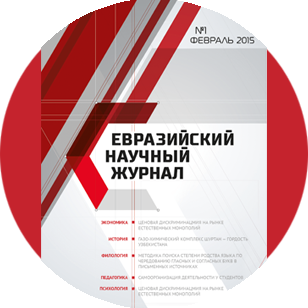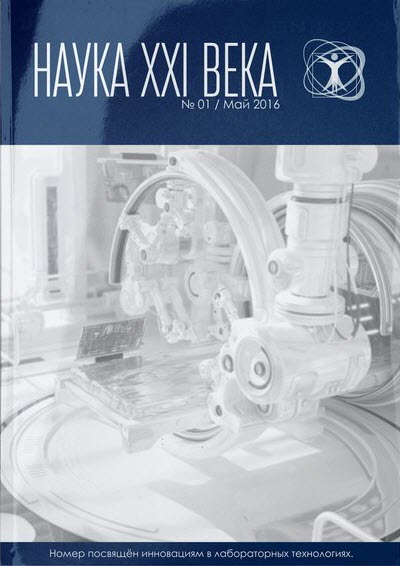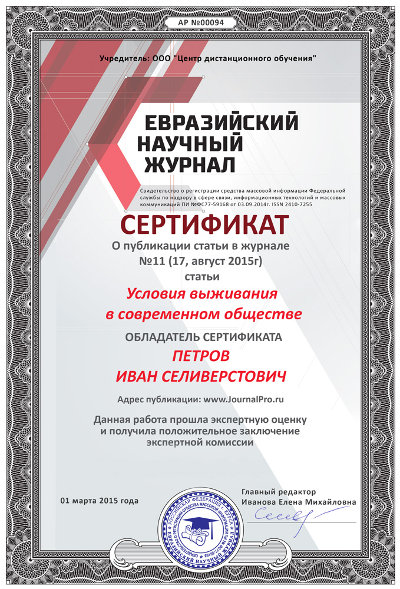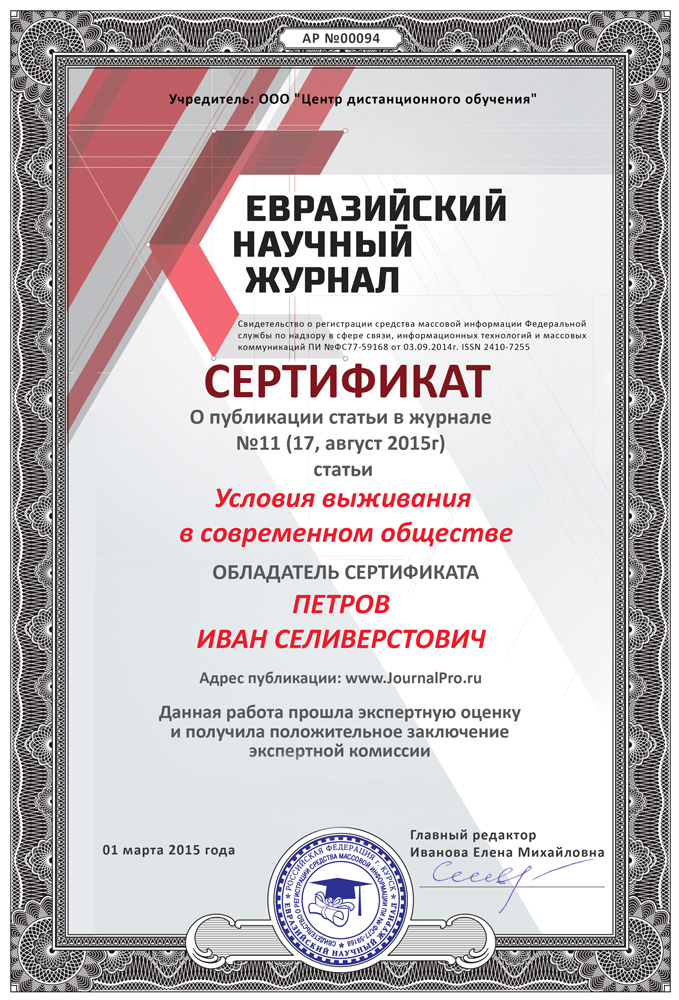Срочная публикация научной статьи
+7 995 770 98 40
+7 995 202 54 42
info@journalpro.ru
Literary translation as functional interaction of languages
Рубрика: Филологические науки
Журнал: «Евразийский Научный Журнал №6 2017» (июнь, 2017)
Количество просмотров статьи: 2890
Показать PDF версию Literary translation as functional interaction of languages
Ashurova N.A.
(Samarkand State Institute of Foreign Languages)
Translation is a process and the result of turning a text from one language into another, which means expressing the same by the signs of a different language. Bearing in mind that every sign has two planes (plane of expression and plane of content) the essence of translation could be described as changing the elements of the plane of expression while the plane of content remains constant.
Usually when people speak about translation they are seldom specific about the meaning. The presumption is quite natural — everybody understands the meaning of the word. However, to describe translation intuitive understanding is not sufficient — what one needs is a definition. Translation means both a process and a result, and when defining translation we are interested in both its aspects.
In order to explain translation it is important to compare the original (source) text and the resulting (target) one. Every language is characterized by a specific structure of its lexico-grammatical fields and has its own lexical, morphological and syntactic systems. It may result in lack of coincidence between the means of expressing the same content in SL (source language) and TL (target language).
That is why good practical knowledge of the two languages is quite necessary but not sufficient for translating. Besides this knowledge one must possess a number of skills and be guided by a number of principles worked out by the theory of translation. These principles are connected both with linguistic and extralinguistic aspects. In translation we deal with two languages (two codes) and to verify the information they give us about the extralinguistic objects (and concepts) we should consider extralinguistic situation, and background information.
In short, translation is functional interaction of language and to study this process we should study both the interacting elements and the rules of interaction.
While translating one must keep in view typological characteristics of both the languages and remember that the same idea may be expressed lexically in one of them and grammatically in the other.
One of the main demands upon a person translating any text is that he should be well acquainted with its subject matter. If all these principles are taken into consideration there will be no danger of so-called „literal” translation, which means a word-for-word translation. This type of translation with all its seeming accuracy ignores both linguistic and extralinguistic factors discussed above. It leads to preserving the meanings of separate words and at the same time it distorts the meaning of the whole text, thus often creates an undesirable comic effect.
Also we can distinguish between literary and informative translation, on the one hand, and between written and oral translation (or interpretation), on the other hand.
Literary works are known to fall into a number of genres. Literary translations may subdivide in the same way, as each genre calls for a specific artistic means to impress the reader. Translators of prose, poetry or plays have their own problems. Each of these forms of literary activities comprises a number subgenres and the translator may specialize in one or some of them in accordance with his talents and experience. The particular tasks inherent in the translation of literary works of each genre are more literary than linguistic. The great challenge to the translator is to combine the maximum equivalence and the high literary merit.
All branches of the theory of translation are concerned with important aspects of the translator’s work and constitute a body of theoretical thought of indisputable practical value. Taking into consideration all these factors there is no wonder that literary translation causes interest of different kind of scholars, and above all linguists.
The list of used literature:
- Бреус Е.В. Основы теории и практики перевода с русского языка на английский. — М.: Просвещение, 2000. — 183 с.
- Гарбовский Н.К., Беллин Н.Ф., Ширяев А.Ф. Перевод как лингвистическая проблема. Сборник статей. — М., 1982. — 232c.
- Катцер Ю., Кунин А. Письменный перевод с русского языка на английский.- М., — 1964. — 45-47c.









